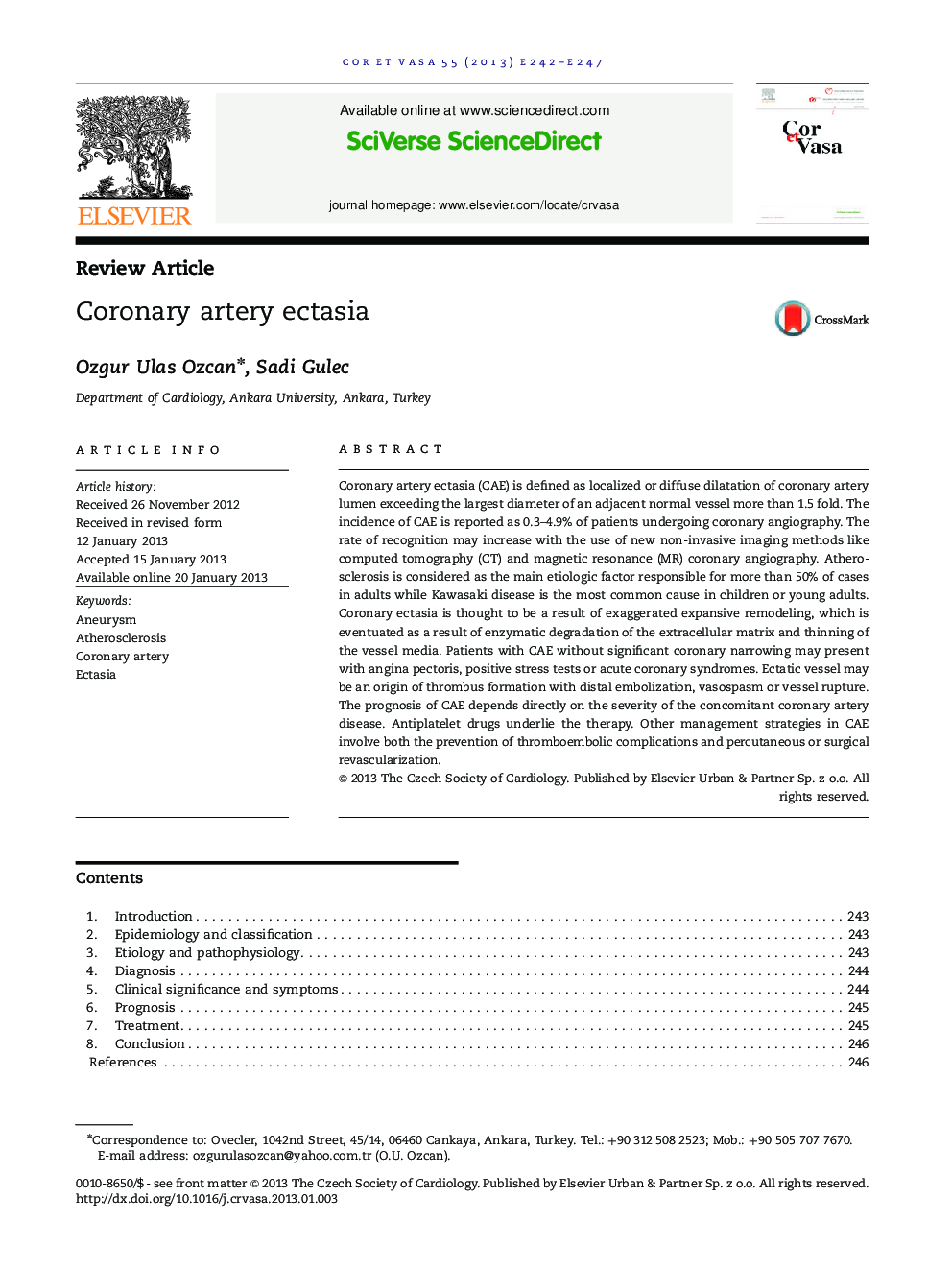| Article ID | Journal | Published Year | Pages | File Type |
|---|---|---|---|---|
| 5879902 | Cor et Vasa | 2013 | 6 Pages |
Abstract
Coronary artery ectasia (CAE) is defined as localized or diffuse dilatation of coronary artery lumen exceeding the largest diameter of an adjacent normal vessel more than 1.5 fold. The incidence of CAE is reported as 0.3-4.9% of patients undergoing coronary angiography. The rate of recognition may increase with the use of new non-invasive imaging methods like computed tomography (CT) and magnetic resonance (MR) coronary angiography. Atherosclerosis is considered as the main etiologic factor responsible for more than 50% of cases in adults while Kawasaki disease is the most common cause in children or young adults. Coronary ectasia is thought to be a result of exaggerated expansive remodeling, which is eventuated as a result of enzymatic degradation of the extracellular matrix and thinning of the vessel media. Patients with CAE without significant coronary narrowing may present with angina pectoris, positive stress tests or acute coronary syndromes. Ectatic vessel may be an origin of thrombus formation with distal embolization, vasospasm or vessel rupture. The prognosis of CAE depends directly on the severity of the concomitant coronary artery disease. Antiplatelet drugs underlie the therapy. Other management strategies in CAE involve both the prevention of thromboembolic complications and percutaneous or surgical revascularization.
Related Topics
Health Sciences
Medicine and Dentistry
Cardiology and Cardiovascular Medicine
Authors
Ozgur Ulas Ozcan, Sadi Gulec,
